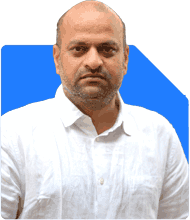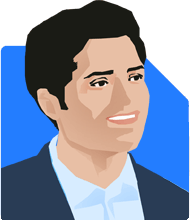Ramalingam Kalirajan |10872 Answers |Ask -Follow
Mutual Funds, Financial Planning Expert - Answered on Apr 17, 2024
He has an MBA in finance from the University of Madras and is a certified financial planner.
He is the director and chief financial planner at Holistic Investment, a Chennai-based firm that offers financial planning and wealth management advice.... more

Hi I have taken an insurance Policy : Click 2 Protect 3D policy. its a combi policy where Term Insurance is from HDFC Life and Health Insurance from ERGO (In first year it was Apollo Munich). Its been 5 years since I have been paying the premiums, every year the health premium increased. Recently I paid 32k as premium where initially it was 26k. here Term is around 12K odd, rest is for health. My first issue is like I feel I am being charged more for less benefits, the insurance covers my Wife and two kids (7 years) and me. By God Grace till date its no claim policy. The base cover is 3L and added benefits is 3L. I see , their counter parts offer more benefits for such an amount say 20K. i tried to shift to Star but portability denied saying it is not possible since it is combined policy. Here i want more cover or able to port to other service provider. plz suggest.
Increased Premiums and Coverage:
Review your Policy: Carefully examine your policy document to understand the breakdown of the premium between term insurance (HDFC Life) and health insurance (ERGO). This will help you assess if the health coverage benefits justify the increasing cost.
Contact HDFC Life and ERGO: Reach out to both HDFC Life (for term insurance) and ERGO (for health insurance) to inquire about possible options for increasing your sum assured (coverage amount) within the existing plan. This might lead to a higher premium, but it would also provide greater financial protection.
Portability Limitations:
Combined Policy Challenges: You're right; combined term and health insurance policies like Click 2 Protect 3D can be difficult to port due to their integrated nature. While individual term insurance plans are generally portable, porting health components often faces challenges.
Alternative Solutions:
Consider Separate Policies: Explore the possibility of purchasing separate term life insurance (potentially with a higher sum assured) and a new health insurance plan from another provider that better suits your needs and budget. This might involve surrendering the Click 2 Protect 3D policy, but it could offer more flexibility and potentially lower costs in the long run.
Negotiate with HDFC Life and ERGO: You could try negotiating with HDFC Life and ERGO to see if they can offer a more competitive premium or increased coverage within the existing plan.
Here are some additional tips:
Compare Online Quotes: Use online insurance comparison platforms to get quotes for separate term life and health insurance plans from different providers. This can help you compare coverage options and premiums.
Focus on Needs, Not Just Cost: While cost is important, prioritize getting adequate coverage for your term and health needs. Don't compromise on coverage just to get a lower premium.
Remember:
Carefully review the terms and conditions of any new policy before purchasing.
Consider factors like your age, health condition, and family needs when determining your required coverage amount.
By thoroughly evaluating your current plan, exploring alternatives, and comparing options, you can make an informed decision about whether to adjust your Click 2 Protect 3D policy or switch to separate plans for better coverage or affordability.
You may like to see similar questions and answers below
Sanjib Jha | Answer |Ask -Follow
Insurance Expert - Answered on Oct 12, 2022
Milind Vadjikar | Answer |Ask -Follow
Insurance, Stocks, MF, PF Expert - Answered on Sep 09, 2024
Milind Vadjikar | Answer |Ask -Follow
Insurance, Stocks, MF, PF Expert - Answered on Sep 29, 2024
Radheshyam Zanwar |6735 Answers |Ask -Follow
MHT-CET, IIT-JEE, NEET-UG Expert - Answered on Dec 06, 2025
Dr Nagarajan J S K |2576 Answers |Ask -Follow
NEET, Medical, Pharmacy Careers - Answered on Dec 06, 2025
Mihir Tanna |1090 Answers |Ask -Follow
Tax Expert - Answered on Dec 06, 2025
Ramalingam Kalirajan |10872 Answers |Ask -Follow
Mutual Funds, Financial Planning Expert - Answered on Dec 06, 2025
Radheshyam Zanwar |6735 Answers |Ask -Follow
MHT-CET, IIT-JEE, NEET-UG Expert - Answered on Dec 06, 2025
Radheshyam Zanwar |6735 Answers |Ask -Follow
MHT-CET, IIT-JEE, NEET-UG Expert - Answered on Dec 06, 2025
Radheshyam Zanwar |6735 Answers |Ask -Follow
MHT-CET, IIT-JEE, NEET-UG Expert - Answered on Dec 06, 2025
Dr Dipankar Dutta |1837 Answers |Ask -Follow
Tech Careers and Skill Development Expert - Answered on Dec 05, 2025
Dr Shyam Jamalabad |108 Answers |Ask -Follow
Dentist - Answered on Dec 05, 2025
Dr Shyam Jamalabad |108 Answers |Ask -Follow
Dentist - Answered on Dec 05, 2025




























